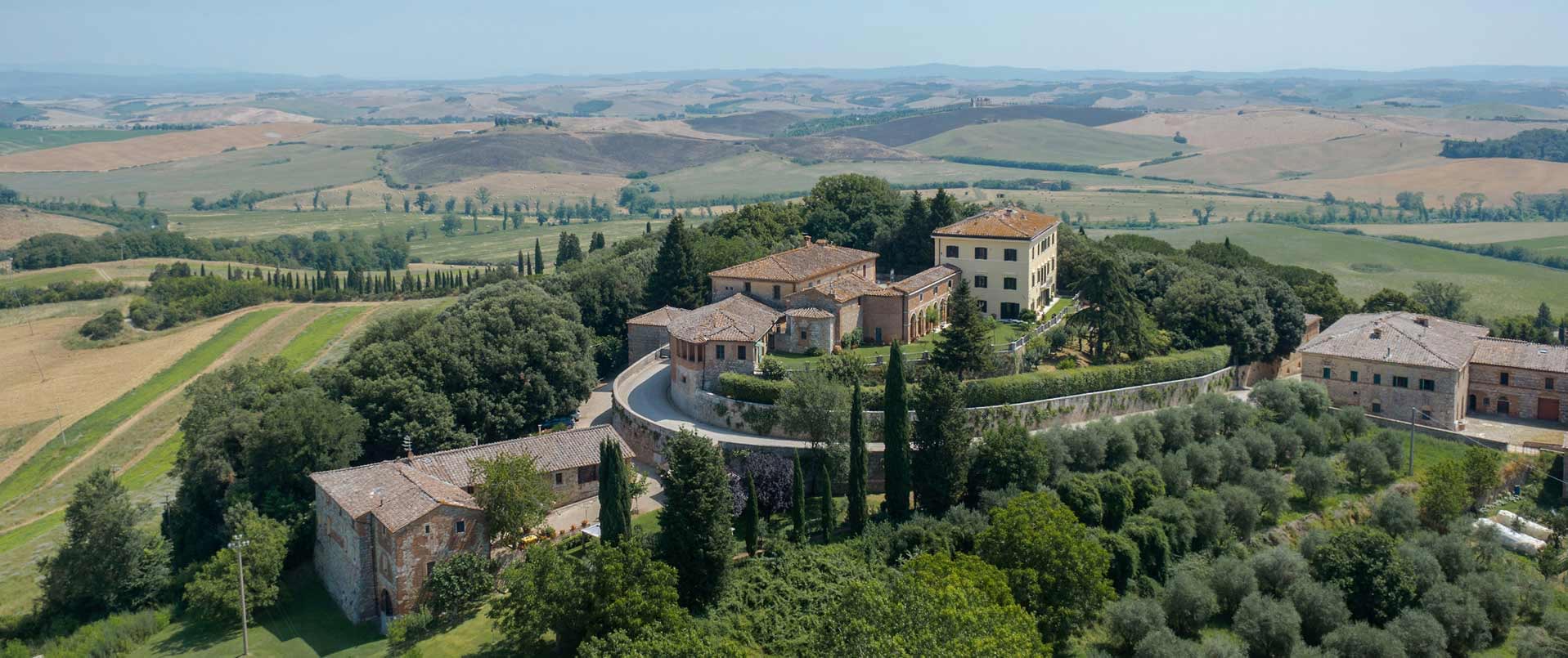
The Castle of San Michele dominates the small historic centre of the village of the same name, San Michele in Teverina. The structure was built starting in 1100, and then rebuilt in the mid-1500s following its partial demolition. It sits atop a tuff outcrop overlooking the Calanchi Valley of Civita di Bagnoregio. Visitors can step back in time by exploring the rooms of the ancient castle and the surrounding outdoor areas that comprise this historical Renaissance gem.
Inside the castle, you will find luxurious suites, including one dedicated to the Prince of Montholon. These suites feature private living rooms and relaxation areas such as an open veranda with a terrace that offers a stunning view of the valley, perfect for hosting parties and cocktails. For those seeking an evening of socialising, the elegant billiard room sets the scene for a truly nostalgic atmosphere. The rooms, decorated in authentic Renaissance style, boast exquisite furnishings and ceilings adorned with period frescoes. Additionally, there are apartments overlooking the castle square that complement the experience. Once the castle’s stables, these now serve as independent living units complete with modern amenities, seamlessly blending history with contemporary hospitality.
Guests can unwind in the Castle’s infinity pool or in the new Jacuzzi beside the large swimming pool in the garden, ideal for enjoying moments of relaxation surrounded by nature. In the main area of the stables, a beautifully restored room now stands, preserving the essence of Tuscia tradition. This exquisite space offers refined and distinctive settings, perfect for hosting an unforgettable event.
The history of Castello di San Michele
Time seems to stand still in the rooms and corridors of the Castle of San Michele. The Castle traces its origins back to 1164, when it was founded by a certain Piero da Mugnano, giving the fortress its original name, Castel di Piero. Perched like an island overlooking the Valley of the Calanchi, the castle can only be reached via a stone bridge, which was once a drawbridge. The ancient fortress was destroyed in 1523 as punishment and reprisal against the Baglioni family, who had become the owners, and was rebuilt a few years later by Count Alberto Baglioni on the foundations of the original palazzo, adjacent to the parish church of San Michele Arcangelo. The Baglioni family, descendants of the prominent Baglioni family from Perugia, presided over the castle and the hamlet of Castel di Piero during its heyday. Countess Virginia Baglioni had the balcony overlooking the main entrance erected and was also responsible for creating the external terrace. Her name can still be seen inscribed in the stone here.
Staying at the Castello di San Michele is like embarking on a magical journey through the 600-year history of the village of San Michele, rich with tales of princes and princesses, powerful families and the enduring enchantment of a place that has preserved its authentic charm.
Facilities and services at Castello di San Michele
The Castle of San Michele offers its guests standard services typical of any non-hotel accommodation: the supply and eventual change of linen, a check-in and check-out service, 24-hour assistance for any additional requirements, heating, private bathrooms for each room and the possibility of booking through the main on-line portals.
Guests at the establishment can enjoy a range of additional services that will enrich their stay and make it an unforgettable experience, such as having a private housekeeper, personalised yoga sessions in the garden, massages, and guided excursions in the Valley of the Calanchi either on foot or by bicycle, as well as horseback riding and riding lessons. These are complemented by a range of activities aimed at promoting, discovering and developing the surrounding area, such as wine tastings in collaboration with the famous Mottura winery and numerous initiatives involving local associations and residents. The Castle is part of the “Il Borgo Diffuso di San Michele” project, a sustainable tourism initiative that includes the scattered hotel formula and other lodging options throughout the village. The goal of this project is to boost the local economy by promoting tourism and rejuvenating the entire region.
 Accommodation
Accommodation
 Film sets
Film sets
 Gardens
Gardens
 Private events
Private events
 Spirituality
Spirituality
 Visits
Visits
 Weddings
Weddings
 Cultural tourism
Cultural tourism  Cyclotourism
Cyclotourism  Excursions
Excursions  Gardens
Gardens  Hiking
Hiking  Historic Homes open to visitors
Historic Homes open to visitors  Nature
Nature  Sports
Sports  Tasting
Tasting  Walking itineraries
Walking itineraries  Wine tourism
Wine tourism